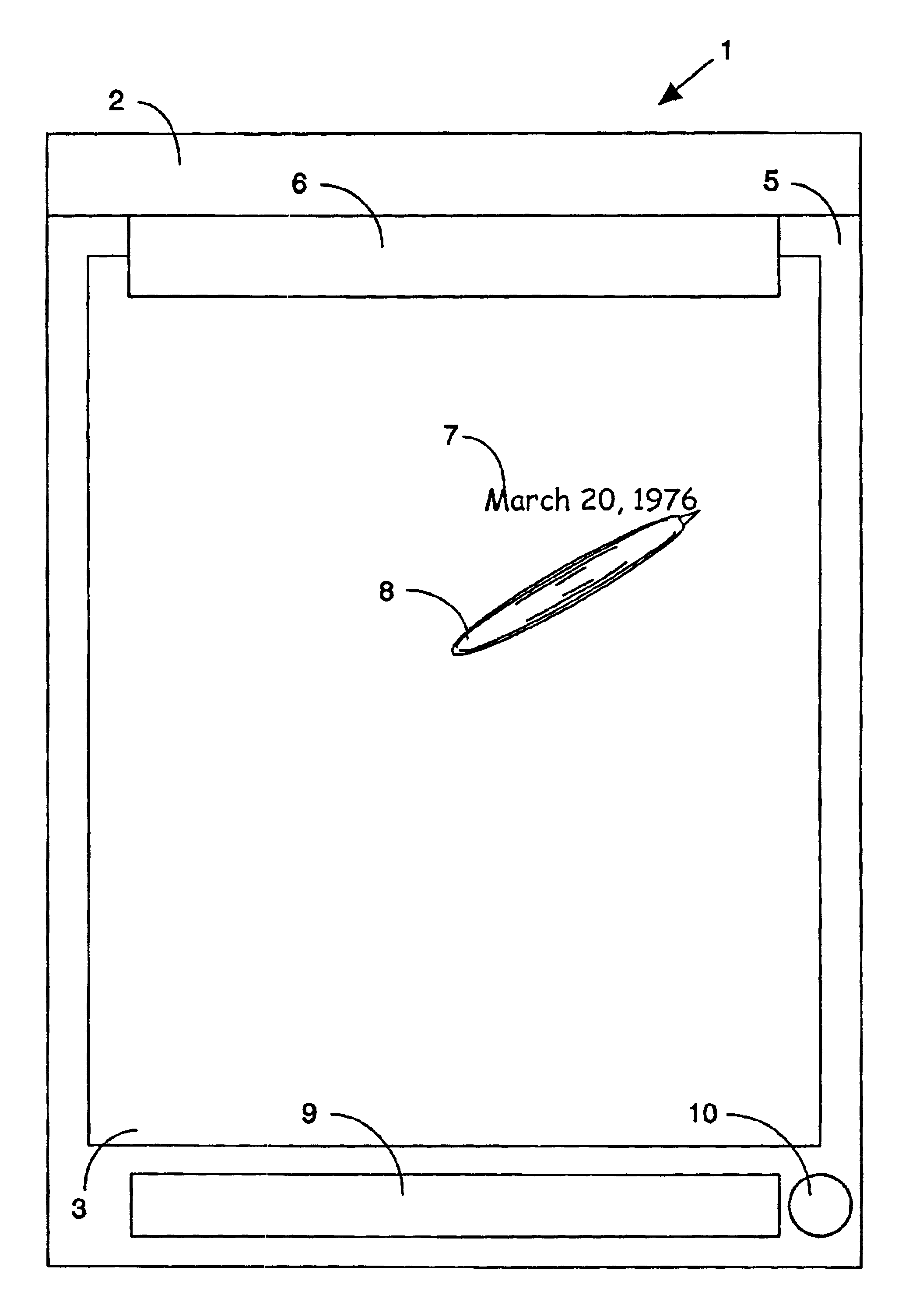Apparatus and method for automatic form recognition and pagination
- Summary
- Abstract
- Description
- Claims
- Application Information
AI Technical Summary
Benefits of technology
Problems solved by technology
Method used
Image
Examples
Embodiment Construction
[0017]Prior to a discussion of the figures, a general overview of the features and advantages of the invention will be presented. The present invention relates to streamlining the process of bringing data, which is written onto forms via pen strokes, into a computer system without requiring changes to the well-established practice of having untrained persons fill out paper forms.
[0018]Tablet computers capture data by placing a form on an electronic clipboard and then using an electronic pen that also writes normally in ink to complete the form. As the form is filled out, the data is captured without requiring any additional effort from the user. In fact, the user may even be unaware that the clipboard is an electronic device. During the initial data gathering phase, where the user is entering raw data, there are no special computational requirements. The invention provides advantages in the postprocessing of the raw data by identifying which form was filled out by the user, by assoc...
PUM
 Login to View More
Login to View More Abstract
Description
Claims
Application Information
 Login to View More
Login to View More - R&D
- Intellectual Property
- Life Sciences
- Materials
- Tech Scout
- Unparalleled Data Quality
- Higher Quality Content
- 60% Fewer Hallucinations
Browse by: Latest US Patents, China's latest patents, Technical Efficacy Thesaurus, Application Domain, Technology Topic, Popular Technical Reports.
© 2025 PatSnap. All rights reserved.Legal|Privacy policy|Modern Slavery Act Transparency Statement|Sitemap|About US| Contact US: help@patsnap.com



